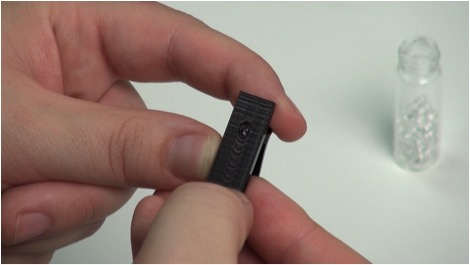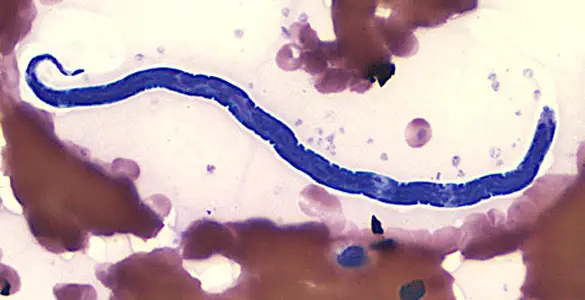iPhone Microscope
The Ultimate in Portability and Effectiveness - 1000X
The iPhone microscope combines portability and effectiveness. A wide range of microscopes and microscopy techniques have been developed over the years for a wide variety of applications both at home and for professional use.
Although there is a wide variety of compound and stereo microscopes on the market that have become more available and affordable over the years, they are still not as popular as other modern technological devices like smartphones and ipads. However, with recent developments, it is possible to own an effective microscope using the iPhone which is both affordable and conveniently portable.
While technological advancements have seen microscopes being improved to produce high quality images, there are many people who still feel that microscopes are bulky, which makes them challenging to use outdoors in the field.
To overcome these challenges and make microscopes available to everyone, physicists have come up with a way through which smartphones can be used to magnify an object by up to 1000x (Mathews, 2014).
Using a 3D printed system that can be attached to the iPhone, it is now possible to convert the iphone to a microscope with as high as 1000x magnification to effectively observe a variety of objects/specimen including a variety of diseases causing parasites such as malaria parasites and other plasmodium.
Creating the iPhone 1000X Microscope
The 1000x iPhone microscope was designed between 2014 and 2015 and uses a small glass bead as the microscope lens. Using a 3D printer, a case is produced that is specific to the type of Smartphone being used.
There are several free designs available from which the half cases can be printed out (Mathews, 2014). A glass bead of the right size for given cases then has to be inserted in to the case for different magnifications.
The following are the different types of beads available for magnification:
- 3mm bead - a 3mm bead magnifies the object by 100x
- 1mm - a 1mm bead will magnify the object by 350x
- 0.3mm bead - this size of bead magnifies the object by 1000x
* While all the other magnifications can be achieved on other smartphones, 1000x magnification is only available for iphone.
Video by pnnl.gov
This technology was designed to help first responders be able to look at samples using a Smartphone and send images forward for more analysis. It is also for this reason that the technology is cheap. In particular, this has been shown to present a great advantage for first responders to be able to simply discard the attachment or replace the beads in case of contamination or when need be.
With free designs of the case online, users with 3D printers at home or work can simply print out the case (attachment) on to their iPhone that can then simply be used as a microscope. The following is an image of the attachment and beads:
By combining the iPhone with the 3D printed clip (half case) users will not only be able to create an inexpensive microscope, but also a powerful device that is superior to a number of microscopes in the market.
The 3D printed clip easily slips over the lens of the camera (of the phone). It is no thicker than the typical phone case, which enhances its portability. The clip has also been designed to fit a variety of smartphones as well as ipads, which makes it convenient for users with several of such devices.
Using the iPhone Microscope
Although it is possible for users to simply try creating the iphone microscope using tape and rubber, it is much better and convenient to use the 3D streamlined design that is more stable and even comes with a slide holder. This makes the microscope more stable and easier to use out in the field.
For new users, using 100x magnification (from 3mm beads) is recommended in order to get started with the system. 1000x is more sensitive and may take some time to get accustomed to. In any case, it is usually always recommended to start with low magnification when first using a microscope device.
When using this system, the lens (bead) has to be pushed in to the plastic housing to the point where the lens is flush with the housing. In the event that the camera has some trouble focusing, then it is important to check the lens placement so as to ensure that the lens is seated well in the housing case.
If these issues continue to be experienced, including blurry image or dark spots that won't go away even after rubbing the lens with alcohol, the lens can simply be removed and replaced.
As mentioned above, the iPhone microscope is both portable and cheap. For this reason, it is being widely used in parts of Africa, and other parts of the world to detect diseases and help patients seek treatment early.
In parts of Central Africa, a bite from a deer fly, mosquitoe or a mango fly may result in patients being infected by a worm (a nematode) that is typically localized in the eye. Although the parasite causes a little itching and swelling, taking a dose of ivermectin used in the region to eradicate the parasite may result in such complications as hemorrhaging and neurological problems that can also lead to death.
By using these inexpensive and portable microscopes, it has become possible to screen and identify those with the parasite in a matter of minutes and thus determine those who can be treated using specific drugs effectively. Here, it is possible to see the significance of this microscope with regards to fast intervention (Williams, 2015).
Loa Loa Worm
Apart from the Loa Loa worm, the iPhone microscope is also being successfully used to identify the presence of malaria parasites in blood. Malaria parasites (Plasmodium falciparum) are also transmitted by mosquitoes and once in the body (human body) they can be found in blood (red cells).
In the blood cells, these organisms speed up the synthesis of glucose and render the cell permeable to a variety of molecules. Although this does not cause the cell to rupture, it causes damage to the red blood cells as the parasite continues to reproduce. Untreated, malaria can cause death.
Because the iPhone microscope has high magnification, one is able to observe a cell's interior and identify the parasite and determine whether an individual has malaria for further analysis and treatment.
Malaria Parasites
Malaria parasites Image
This is an image of red blood cells infected with malaria parasites (the bluish ring shaped organisms in the cell)
More about Parasites under the Microscope
iPhone Microscope Benefits
The iPhone microscope presents a number of benefits that makes it a valuable device.
These include:
- Very cheap - Not including the 3D printer, the attachments used to create the iPhone microscope are very cheap. For this reason, these parts can be replaced at very little cost.
- Easy to use - With this device, all the user needs is the iPhone, the glass beads and the case. The lens (beads) can be easily inserted into the case, which is then easily attached onto the iphone. This also comes with a slide holder where the glass slide can be attached for viewing. Perfect for novices.
- Portable- Users can easily carry this device into the field, where it can be used to view and identify a wide range of objects. When not in use, the parts can simply be detached in order to use the phone.
Limitation - One of the main limitations of the iphone is that images may be unclear because there isn't a light source.
The iphone microscope is a step forward in microscopy. It presents a number of advantages that make it a valuable tool in detecting some diseases and thus seeking early treatment.
Apart from its medical applications, the fact that it involves the use of a Smartphone means that it is completely accessible to be used by everyone. The parts needed for attachment are very cheap and can be replaced with ease.
It can be used both professionally in various fields as well as at home by both hobbyists and beginners. Here, it is important to point out that this is not a toy or a toy like microscope, but rather a powerful microscope that can be used to not only observe macro-organisms, but also micro-organisms like single celled organisms and their nuclei.
It presents a lot of opportunities for all users and is investigating.
Feel free to check out the Digital Microscope Camera Adapter and specifically the Gosky Universal Smartphone Adapter Mount
Read about How Mobile Technology advances Microscopy
Return from iPhone Microscope to MicroscopeMaster Research Home
References
Lee Mathews (2014) 3D-printed clip-on Smartphone
microscope magnifies 1000x
Sarah C. P. Williams (2015) Microscope made from smart phone diagnoses deadly African parasite.
http://www.fungioz.com/iphone-microscopes.html
https://www.cdc.gov/malaria/about/biology/parasites.html
Find out how to advertise on MicroscopeMaster!


![Malaria Infection By Photo Credit: Content Providers(s): CDC/Dr. Mae Melvin Transwiki approved by: w:en:User:Dmcdevit [Public domain], via Wikimedia Commons Malaria Infection By Photo Credit: Content Providers(s): CDC/Dr. Mae Melvin Transwiki approved by: w:en:User:Dmcdevit [Public domain], via Wikimedia Commons](https://www.microscopemaster.com/images/malaria.png)




